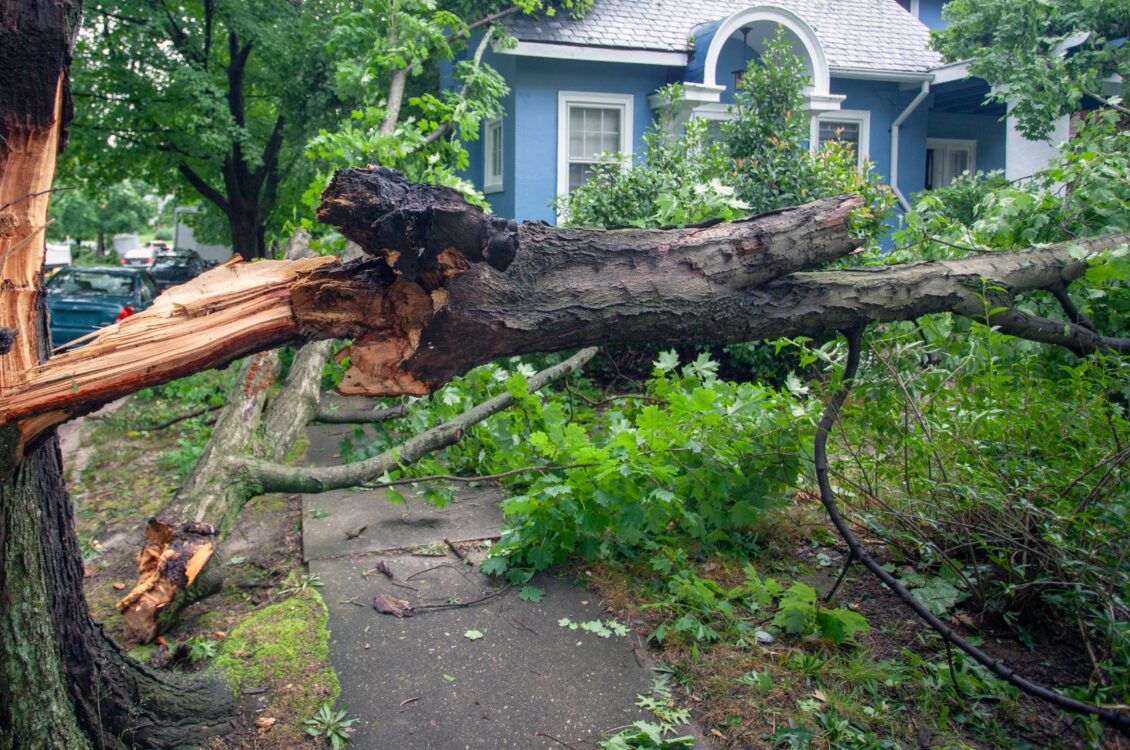
In any given year, weather disasters can result in billions of dollars of damages. During hurricane season, affected properties can expect to see flooding, broken windows, downed power lines, leaking roofs and more.
Hurricanes in particular create strong winds that are capable of uprooting trees and debris, which can fly around and damage properties of all sorts. Furthermore, hurricane winds may cause storm surges or rapidly rising sea levels, as well as flooding that can ruin cars and homes. Devastating winds can also even lead to tornadoes. [1]
How can you protect yourself and your home in the event of a hurricane? Get to know the facts about what kinds of damage you can expect and how you can best prepare your home for a storm.
Potential hurricane damage by category
Hurricanes are classified into five categories based on wind speed, but they can damage your home at any level. Here is a breakdown of what types of damages to expect based on each category:
Category 1 hurricane damage
While category 1 hurricanes fall lower on the scale of severity, the damage they can leave behind may still be jarring. Usually, this looks like minor damage to homes’ exteriors, uprooting of smaller trees, falling branches, power outages and excessive damage to power lines. These hurricanes carry winds of 74 to 95 mph. [2]
Category 2 hurricane damage
Dangerous winds 96 to110 mph from a category 2 hurricane can result in major damage to homes’ exteriors, uprooting of small trees causing road blockage, and guaranteed power outages that can last from days to weeks. [2]
Category 3 hurricane damage
Because winds in category 3 hurricanes reach up to 111 to 129 mph, these storms will leave even more devastation, including extensive damage to homes’ exteriors, and the uprooting of many trees, causing more roads to be obstructed. [2]
Category 4 hurricane damage
Winds of 130 to 156 mph wreak widespread havoc. Homes can lose exterior walls and roofs. Most trees are uprooted, and many power lines are down. Power outages can last weeks to months, and residential areas become isolated due to the pileup of debris. [2]
Category 5 hurricane damage
As the highest level hurricane classification, a category storm is incredibly destructive, with winds over 157 mph. A large percentage of homes are destroyed. Most areas are rendered uninhabitable, with fallen trees and down power lines making roads impassable. Power outages can last for months. [2]
Common property damages from hurricanes
In the aftermath of a hurricane, several types of damages are most common: [3]
- Structural and foundation damage: Hurricanes can cause your home to shift and can leave cracks in the foundation or structure, making your home unlivable.
- Utility damage: Water systems, power lines, internet, electrical utilities and telecommunications can all become damaged by the strong winds from a hurricane.
- Roof damage: This is usually the most visible evidence of hurricane damage. It includes damage to shingles, sheathing and framing.
- Equipment damage: You may see damage to your heating and air-conditioning systems, generators, appliances, transformers and pool equipment.
- Interior damage: It’s not uncommon for windows to be broken and doors to be torn off during particularly bad storms. This can allow flying debris to enter your home, causing damage to your furnishings, walls and floors. Additionally, moisture from the storm can lead to future mold growth in your home.
Does insurance cover hurricane damage?
A typical homeowners insurance plan will cover damage from lightning, hurricanes and wind, but these plans may carry some exclusions, and stand-alone hurricane insurance policies do not exist. However, you can add additional types of insurance such as flood insurance, sewer backup insurance and additional living expense (ALE) coverage to guarantee that you and your home are well prepared in the event of a hurricane. [4]
Sources
[1] www.nhc.noaa.gov/prepare/hazards.php#:~:text=High%20Winds,-Tropical%20storm%2Dforce&text=Hurricane%E2%80%90force%20winds%2C%2074%20mph,above%20hurricane%20strength%20well%20inland. Accessed May 4, 2022
[2] www.nhc.noaa.gov/aboutsshws.php Accessed May 4, 2022
[3] www.potts-law.com/the-5-most-common-types-of-property-damage-from-hurricanes/ Accessed May 4, 2022
[4] www.thebalance.com/hurricane-damage-insurance-and-claims-coverage-4150506 Accessed May 4, 2022



